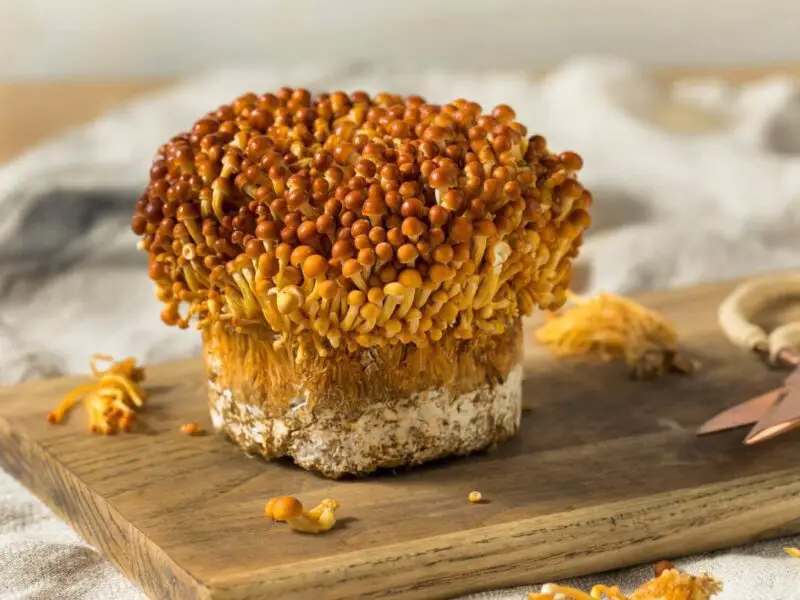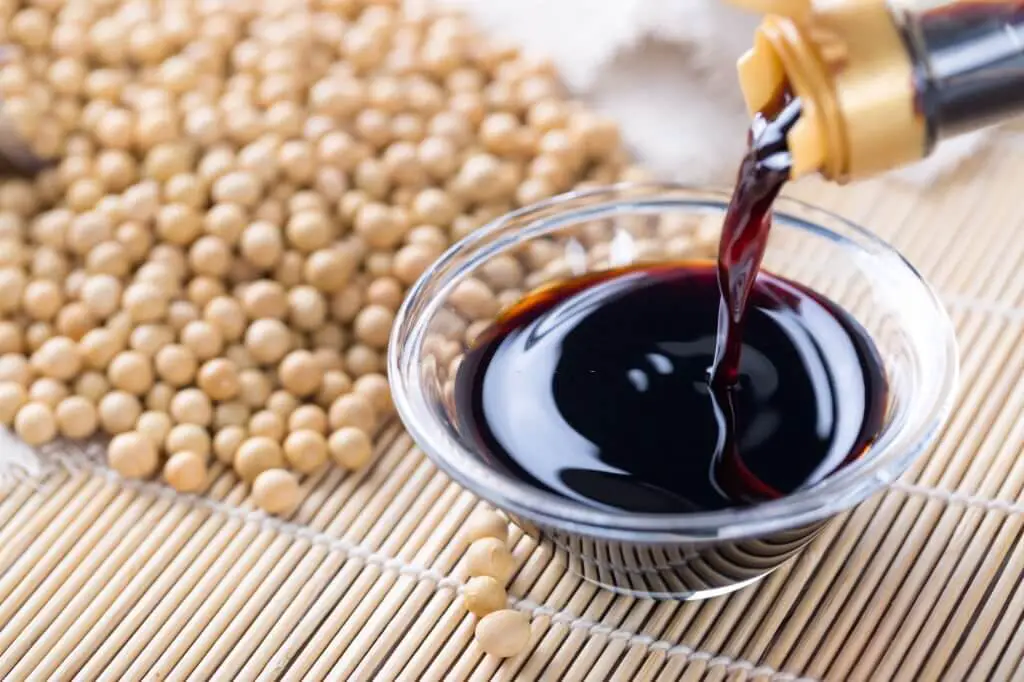Have you ever tried to make your favorite Asian soup or stir-fry dish only to find that enoki mushrooms were nowhere to be found? I know the struggle all too well—those skinny little mushrooms can be a hassle to track down sometimes. But never fear; there are plenty of delicious substitutes waiting in the wings to save your recipe. Now, normally, I wouldn’t dare recommend messing with the culinary traditions of another culture. But let’s be real—a girl’s got to eat! So in today’s blog, I’m spilling all the juicy details on the best substitutes for those elusive enoki mushrooms. From meaty portobellos to the ocean-fresh taste of oysters, we’ll take a look at fungi friends that can seamlessly step in without missing a beat. Read on to find your new bestie in the produce aisle on those days when Enoki just won’t do. Your taste buds will thank me later!
The Best Enoki Mushrooms Substitutes
1. oyster mushroom
When enoki mushrooms are nowhere to be found, oysters are my top pick to fill in. With their delicate texture and subtly seafood-style flavor, they make a gorgeous stand-in for those skinny enoki stems. With shapes that vary from long rows to frilly clusters, oyster mushrooms come in a rainbow of colors like white, grey, pink, and blue. Beyond their beauty, oysters are also packed with nutrients—just one cup gives you almost 20% of your daily iron needs!
Best of all, oyster mushrooms can slide effortlessly into any recipe calling for enoki. Want to make that soup extra rich? Sauté a handful of oysters and toss them in. Looking to boost the nutrition in fried rice without losing that signature crunch? Dice up some oysters and stir them through. Their meaty bites and subtle brininess blend beautifully with other Asian ingredients like soy sauce, garlic, and ginger. And unlike delicate enoki, oysters’ meatier texture means they hold up better to high-heat cooking methods too.
Next time your grocery list needs mushroom magic but enoki just aren’t cooperating, call on oysters to come to the flavor rescue. One taste of their savory-sweet symphony swirling in your soup or stir fry, and you may just decide these beauties deserve top billing over enoki any day.
2. Shiitake Mushrooms
For a true taste of umami, you can’t go past shiitake mushrooms when enoki are off the menu. Hailing from East Asian forests, these darkly handsome fungi have a rich, savory flavor that adds hearty depth to any dish. Although their stems are thicker and their caps larger than delicate enoki, shiitakes’ woody taste makes them an excellent substitute in soups, stir-fries, and noodle bowls.
Like enoki, shiitakes are a classic mushroom in Japanese and Chinese cuisines, and for good reason. Their meaty texture and hints of bacon-like savoriness add satisfying substance without the need for meat. What’s more, research shows compounds in shiitake may even help boost your immunity. Win-win!
To use shiitakes in place of enoki, start by slicing off their thick stems (save these for making stock). Then gently cook the crimini-sized caps until tender but not mushy. Their flavor really blooms with a quick sauté in sesame or coconut oil with a splash of tamari or soy sauce. Ready to be the star of the show in any Asian-inspired dish. So next time your go-to enoki is MIA, call on Shiitakes to deliver authentic umami instead.
3. White button mushrooms
When you want an easy enoki swap with minimal fuss, reach for humble white button mushrooms. Ubiquitous in most grocery aisles, these mild-mannered fungi are perfect for stir-fries, curries, and anything else you’d use enoki in. Despite their plain appearance, buttons still pack tasty nutrients like potassium, B vitamins, and vitamin D.
Best of all, buttons have a similar tender texture to skinny enoki stems. Just give them some quick dice to match Enoki’s bite-sized pieces. Their mellow flavor almost disappears into dishes, acting as a neutral backdrop for other stronger flavors. This makes buttons a seamless swap to bulk up any recipe without altering the taste.
Don’t be fooled by their simple name though—buttons are still mushroom all-stars in my book! Besides being endlessly versatile, they’re also super budget-friendly.
So next time you’re enoki-less, keep things easy and do it with a bucket of button bumpers instead. At a fraction of the cost, you’ll get all the nutrition with zero tastebud remorse. Button up and tuck in—these humble fungi are here to save your supper for sure.
4. Portobello mushrooms
For those nights when you need a substantial mushroom with meaty heft, the portobello takes the gold medal. These mammoth fungi have burly caps that satisfy like a juicy steak—without the guilt. Originating from the same species as button mushrooms, portobellos are simply more mature and thus have a bolder, richer flavor profile.
While portobellos pack more punch than mild-mannered enoki, their substantial texture makes them a worthy stand-in. Simply remove the gills from the underside of each cap, then grill or pan-sear the portobellos until lightly charred. Their tender interiors will soak up other ingredients like a tasty sponge. I love them grilled with a drizzle of balsamic and fresh herbs.
So if your recipe feels lacking without the essence of “meat,” portobellos are here to fill that role. Caramelized and full-bodied, one or two caps will do the savory trick of an entire protein. Their meaty bites make portobellos an A+ alternative to add satisfying heft without carnivorous compromise. Enoki who? With portobellos in your pantry, every meal has the potential to be mighty indeed.
5. Cremini Mushrooms
Looking for an enoki substitute with more flavor than buttons but not as robust as portobellos? Meet the Cremini mushroom—the unsung middle child of the Agaricus clan. Also called baby bella mushrooms, cremini have a richer brown hue and a warmer, nutty taste compared to their blonde button siblings.
Like portobellos, cremini are simply button mushrooms that have been allowed to fully mature. This concentrates their savory flavors into a meatier texture that stands up to braising and simmering. Their caramelized notes pair especially well with fall-inspired stews and risottos.
For an enoki dupe, cremini’s shape and size lend themselves perfectly to any recipe where enoki are sliced or whole. Saute them lightly in oil until just tender, then incorporate them into fried rice, soup, or noodle dishes. Their subtle essence enhances the whole without overpowering other components.
6. Champignon mushrooms
For a European-inspired enoki swap, go gallic with champignon mushrooms. Also called common mushrooms, champignons have a tender bite similar to thin enoki stems. Native to France, their delicate flavor enhances soups, stuffings, and sautés without dominating other ingredients.
Best of all, champignons are readily available worldwide at most grocers. Simply trim off their stems and slice the caps into thin, enoki-like pieces. A quick stir-fry in butter brings out their subtly nuanced taste. Their texture also mimics Enoki’s pleasantly meaty chew.
Lightly cooked champignons are perfect popped into risottos, pastas, and quiches. Their mild flavors meld seamlessly into classic European dishes. And for those following a plant-based diet, rest assured, champignons are totally vegan and gluten-free too!
Whether substituting for enoki in a French bistro recipe or Asian-fusion cuisine, champignon’s versatile freshness makes it an easy international stand-in. Their availability means these humble fungi are always on hand to save any enoki-less meal.
7. Maitake Mushrooms
Also known as hen of the woods, maitake mushrooms have a unique clustering form that resembles a chicken coming to roost. Native to Asia, their complex flavors marry well with eastern cuisines. While their texture is meatier than enoki, maitakes still have a mild taste profile, perfect for substitution.
For enoki stand-ins, separate maitake clusters into sections and break or slice into bite-sized pieces. Their dense fibrous texture resembles enoki stems when prepped similarly. A quick sauté in sesame oil brings out natural notes of nuttiness.
Maitakes shine in soups, stir-fries, and hot pots, where their subtle savoriness supports other strong flavors. Their meaty constitution also allows for bolder cooking methods like grilling or roasting. Always a crowd-pleaser in miso soup too!
While pricier than common mushrooms, maitakes are worth the splurge for special occasions or when desperate for an umami-rich enoki swap. One taste of their complex essence transports your tastebuds to Asia, and you may be hooked on these “hens” forevermore.
Choosing a substitute
Now that you’re familiar with the versatility of oysters, shiitakes, and more, how do you pick the best stand-in for your missing enoki? When selecting an alternative mushroom, consider taste, texture, and how the substitute will be used in the dish.
For soups and braises where enoki’s texture breaks down, heartier options like shiitakes, portobellos, or maitakes work nicely. Their robust morsels complement long-simmering liquids. Meanwhile, oysters, buttons, and cremini replicate enoki’s delicate texture, best for stir-fries where individual bites shine.
Flavor profiles matter too. Mild enoki let other ingredients star, so for those dishes, lightweight swaps like buttons or champignon fit the bill. But bolder fare like curries or risottos cry out for mushrooms with depth, such as shiitakes or maitakes.
Don’t be afraid to experiment and follow your taste buds. Try oysters in that stir-fry first before resorting to meatier backups. Storage life is also a factor; buttons keep longer than more perishable maitakes.
With some creativity, most any mushroom can substitute for thin enoki stems. Matching texture, flavor, or culinary uses will lead you to the ideal enoki twin each time. Now get substituting!
Cooking Tips for Substitutes
While the mushrooms listed here can all stand in nicely for enoki, some may require slightly different cooking methods to get the best results. Here are a few tips:
- Portobellos and maitakes have thicker flesh that needs proper timing. Quickly sear dense caps first before adding smaller diced pieces to ensure even cooking.
- Oysters and shiitakes are more delicate. Sauté briefly over medium-high heat and remove from pan before thinner enoki substitutes overcook.
- Cremini and button mushrooms release liquid as they cook. For stir-fries, allow them to fully evaporate before adding sauce. This prevents dishes from getting watery.
- When using portobellos or shiitakes in soups, remove tough stems and slice caps thinly so they become tender quickly.
- Adjust amounts as needed; a single portobello cap may equal several cups of sliced oysters or buttons by volume.
- Mix-and-match types for variety. Try seared shiitakes with sautéed oysters and cremini in the same meal.
With all substitutes, taste and adjust seasonings after cooking. Different mushrooms have varying strengths that may require more or less salt, acid, or spices. Listen to your taste buds and have fun mixing it up in the kitchen!
FAQs
Can I substitute dried mushrooms for fresh enoki?
While dried mushrooms like shiitakes can stand in for their fresh counterparts in some recipes, their texture will be quite different than delicate fresh enoki. For the closest substitution, it’s best to use fresh mushrooms.
How do I rehydrate dried mushrooms before using them as a substitute?
To rehydrate dried shiitakes or other mushrooms, soak them in hot water for 30 minutes until plump and soft. Save the soaking liquid to use in soups or sauces for extra flavor.
Can I substitute cremini for regular white mushrooms?
Yes, cremini mushrooms are perfectly suitable to use in place of regular white mushrooms. They have a richer, earthier taste but the same basic texture.
Will portobello mushrooms be too strong-tasting as a substitute?
Portobellos have a robust flavor, so for mild dishes, you may want to choose a more subtle mushroom. You can always lower their taste by slicing them thinly or marinating them in an acid like lemon juice first.
Can I freeze mushrooms after preparing them as a substitute?
Yes, most fresh mushrooms can be blanched and frozen for later use as substitutes. Just sauté or roast them first, then freeze in an airtight container for up to 6 months.
What if I’m allergic to mushrooms? Are there any suitable substitutes?
If you have a mushroom allergy, excellent non-mushroom swaps include steamed or spiralized veggies like zucchini, carrots, or cauliflower “rice.” Tofu or tempeh can also stand in texture-wise for some recipes.
Conclusion
So in summary, while enoki mushrooms have an irreplaceable role in many Asian recipes, other fungi friends are always waiting in the wings to fill in when needed. From mild-mannered buttons to rugged portobellos, each variety covered here brings its own unique texture, flavor, and culinary uses to any dish. The best part? They’re all widely available and affordable additions to your pantry arsenal. So don’t let an enoki shortage ever ruin your meal plans again. With this lineup of worthy substitutions in your back pocket, you’ll always have extra mushroom magic up your sleeve. Now go forth and start substituting; your taste buds will thank you for it!


